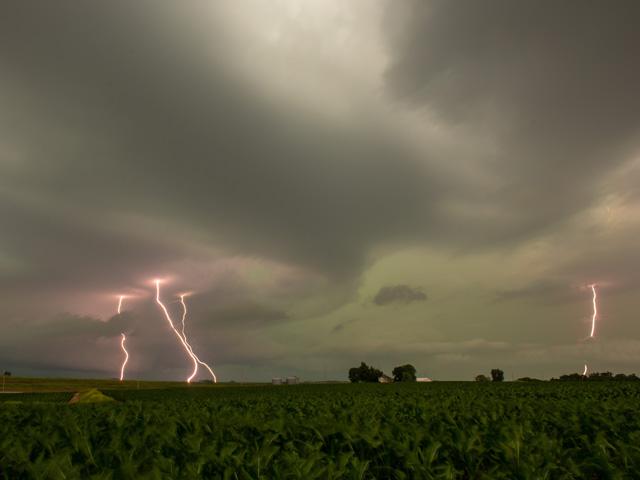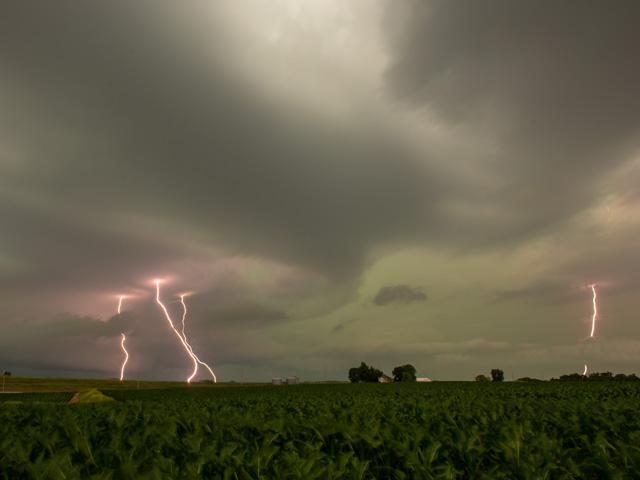Ag Weather Forum
Regional US Weather Outlook for 2024
The switch from El Nino to La Nina this year comes with big changes to weather patterns over the globe. I discussed what the shift means for 2024 but left specifics out of it. You can find that discussion here: https://www.dtnpf.com/…. To get a few more details region by region, I discuss a few of those below for each of the main regions in the U.S.
Keep in mind, however, that the rapid change from a strong El Nino to La Nina has happened several times before, but only once with La Ninas in the seasons before the El Nino. That occurred back in the early to mid-70s, but other ocean temperatures around that time were very cold compared to where we are now, and to the forecast for ocean temperatures for 2024. The whiplash effect of going from La Nina to El Nino and back to La Nina leaves the forecasts with a lot of historical questions, and it is difficult to formulate a forecast with any sort of confidence.
PACIFIC NORTHWEST
Relatively good weather over the winter should leave very little drought in the region for the start of the 2024 growing season. Though the uncertainty with the spring season is high, good soil moisture to start out the spring and a lack of any signal for dryness in the forecast leads to an overall good outlook for winter and spring grains. Those with specialty crops will see a boost from the drought-ridden past couple of years and hopes for bigger yields.
SOUTHWEST
Thanks to Hurricane Hilary in August 2023 and a good El Nino storm track through the region over the winter, much of the region has seen very little drought or dry soils. Mountain snow is piling up, and the threat for additional issues with irrigation is low. If La Nina indeed develops this summer, it would likely enhance the monsoon showers, which would help to feed local rivers. If it is delayed until fall, there is a risk of lower showers from the monsoon and a return to drought conditions, which would increase the heat in the region as well.
P[L1] D[0x0] M[300x250] OOP[F] ADUNIT[] T[]
NORTHERN PLAINS
Little of the region is currently in drought in mid-January, though it has not been all that active so far this winter. El Nino means lower snowfall and overall precipitation as long as it has influence into the middle of spring, which could mean better planting conditions but also limited soil moisture for emergent crops. If a ridge is established in the eastern U.S. for the summer, it could mean drier and warmer conditions in this region as well, though there is a lot of uncertainty here. We will watch for regional drought to possibly develop where thunderstorms miss.
CENTRAL AND SOUTHERN PLAINS
Drought has been a nuisance or significant detriment for the last several years, and pockets of drought remain where precipitation deficits continue to be large. But for the whole, the region has seen some good precipitation thus far this winter, and winter wheat is in better shape to start 2024 than the previous couple of years. The southern storm track should continue to build soil moisture through the spring, depending on when El Nino starts losing its influence, and could continue through late spring as well. While that may make it more difficult to get the 2024 corn and soybean crop in the ground, it would make for good soil moisture for winter wheat. Summer conditions are often tough to predict in this general area, and regional dryness is likely to form drought conditions in some portions of the region where showers and storms miss. However, the setup may be somewhat like last year with a higher tendency for precipitation events in some areas.
MIDWEST/GREAT LAKES
Drought continues to be a major player as some areas saw significant deficits in 2023 that will be hard to erase over the winter or spring. Even though some heavy precipitation events have occurred so far in January, it will take much more precipitation to get out of drought in Iowa especially. If dryness indeed continues through the spring, drought could end up expanding in the region. If it does, that would not set up an uncertain summer in good shape. Unlike last year, when it saw rains return in earnest in July, the potential for a persistent ridge over the region could lead to higher heat and dryness concerns throughout the year with drought worsening. Timing is always everything, but there are some concerns for this region this year.
DELTA/LOWER MISSISSIPPI VALLEY
Drought has been deep in the region since the late summer, but there has been help so far this winter with some very large storms that have moved through. El Nino encourages a southern storm track, and this region should have a higher likelihood of reducing drought further or eliminating it in spots as long as El Nino is wielding its influence. Water levels on the Mississippi River have also increased lately, but drier conditions that are expected farther north could lead to issues with transportation on the river. By the summer, the influence of El Nino should be gone, and the potential for a hot upper-level ridge could redevelop drought in the region. There are no guarantees, but a good start to this year's growing season could end poorly, much like last year if the concerns come true.
NORTHEAST
Heavy precipitation over the winter has caused little concern for drought going into the 2024 season. With El Nino potentially bringing more intense coastal storms into the spring, soil moisture is expected to be high to start the campaign. It may cause problems with planting, but early growth should be good. The potential for an upper-level ridge in the region this summer is concerning, however. Though soil moisture could be good to start, a ridge would promote extra heat and longer dry stretches, which could zap the soil moisture earlier than normal.
MID-ATLANTIC AND SOUTHEAST
Drought has been in and out of the region since last summer, but El Nino has been providing improved rainfall in some larger storms during January. The storm track is favored to go through the regions through the spring as long as it is still asserting its influence, which should provide much of the region with good soil moisture to start the year, even if long-term rainfall deficits remain. The concern over an upper-level ridge this summer may turn around those prospects for a good year, quickly zapping available soil moisture with hot and dry conditions. One major caveat exists, though -- during a developing La Nina, tropical storms are more likely to form. If La Nina does develop, it could save portions of the region at the potential cost of increased flood and wind damage. With warm waters in the Atlantic and Caribbean, there is an increased risk of tropical systems regardless of whether La Nina develops. Any land-falling tropical feature could throw a wrench into the seasonal forecast.
To find more weather conditions and your local forecast from DTN, head over to https://www.dtnpf.com/….
(c) Copyright 2024 DTN, LLC. All rights reserved.






Comments
To comment, please Log In or Join our Community .